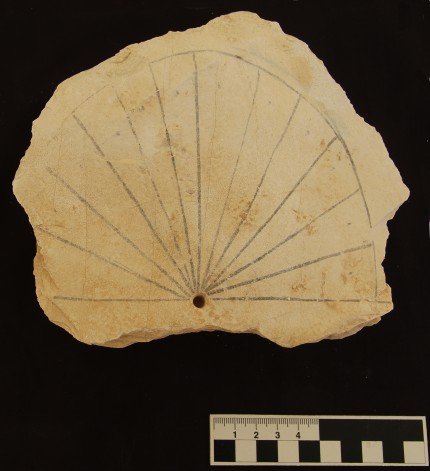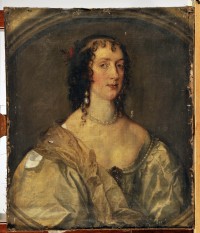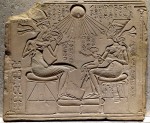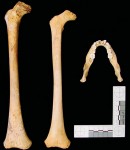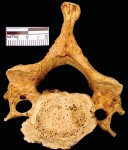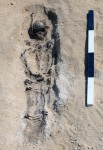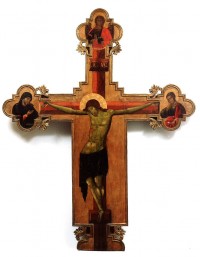 The enamelled bronze figurine of a cockerel unearthed in a child’s grave during a 2011 excavation of a Roman-era cemetery in Cirencester has been cleaned and conserved. Even caked with dirt you could see that it was a beautiful piece, inlaid with blue and light green enamel diamonds on a proudly puffed chest. Now that it has been liberated from its loamy cage, the decorative detail and quality of construction mark it as one of the finest pieces of its kind ever discovered.
The enamelled bronze figurine of a cockerel unearthed in a child’s grave during a 2011 excavation of a Roman-era cemetery in Cirencester has been cleaned and conserved. Even caked with dirt you could see that it was a beautiful piece, inlaid with blue and light green enamel diamonds on a proudly puffed chest. Now that it has been liberated from its loamy cage, the decorative detail and quality of construction mark it as one of the finest pieces of its kind ever discovered.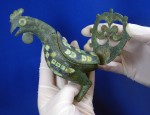
Dating to the middle of the 2nd century A.D., the figurine is five inches tall with the stretched neck and open beak of a cockerel mid-crow. It has enamel inlay on the breast, wings, comb, tail and forming each wide eye. The enamel inlay is shaped to match the part, so while enamel on the chest is diamond-shaped, around the edges of sides it is elongated and curved like long feathers. The enamel in the comb is three mounds following the bronze shape, and on the back/wing they’re closely set crescents in columns. The tail has a swirly openwork decoration with matching enamel accents. The enamel is shades of blue, green and yellow, but may have had a brighter palette including red when new.
The construction is ingenious. Much like Gaul, it is divided into three parts. The main body is hollow, with the back/wing plate and the tail created separately and then soldered to the body. This saved metal and made it easier to craft and to decorate. Each part could be enameled individually and then put together.
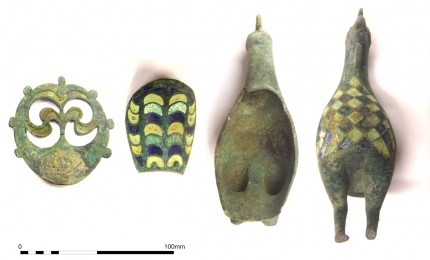
There are only eight Roman cockerels of this kind known to have survived. Four were discovered in Britain and are similar in construction and enamel styles. They may have been a examples of a trend in figurines, or they have been created by the same artist or workshop. The Cirencester figurine is the only one of the cockerels found in Britain to have been excavated from a grave and the only one whose tail has survived.
The other cockerels were found in Germany and the Netherlands, but may have also originated from Britain which was a center of fine enamelwork. One particular workshop in Castleford, West Yorkshire, northern England, was renown for its high quality enamel and may well have produced the Cirencester piece. Cirencester is in the south, so if cockerel was from Castleford, it would have been an expensive import on top of the expense of production.
Archaeologist Neil Holbrook, from Cotswold Archaeology, said the work had “exceeded expectations”, particularly for highlighting its fine enamel detail.
“It reinforces what a fantastic article this is and how highly prized and expensive it must have been,” he said. “This must have cost, in current money, thousands of pounds to buy and countless hours to make, and so to actually put this into the grave of a two or three-year-old child is not something that you would do lightly.
“It really shows that this was a very wealthy, important family, and signifies the love that the parents had for the dead child.”
The cockerel was one of the attributes of the god Mercury, the messenger of the gods who guided the souls of the death to Hades. The parents of the child probably included the expensive and beautiful cockerel figurine as a tribute to the god to secure a safe trip to the afterlife for their beloved child.
The Corinium Museum in Cirencester is hoping to secure the cockerel for permanent display. While talks continue, the figurine will be on public view for the first time on March 27th in Bingham Hall on King Street, Cirencester. The cockerel will be exhibited during the Cotswold Archaeology Annual Lecture which this year is about childhood in ancient Rome. Professor Ray Laurence of Kent University will be the lecturer. Admission is free.
